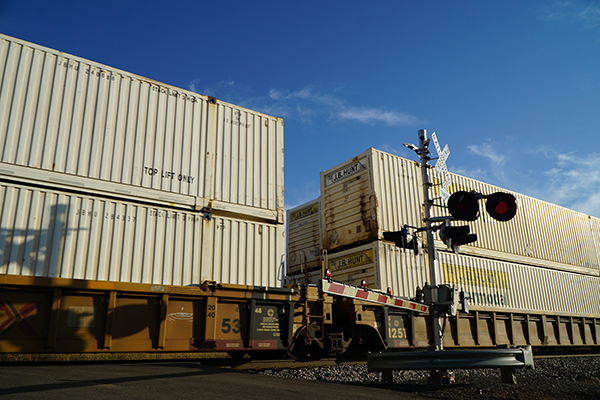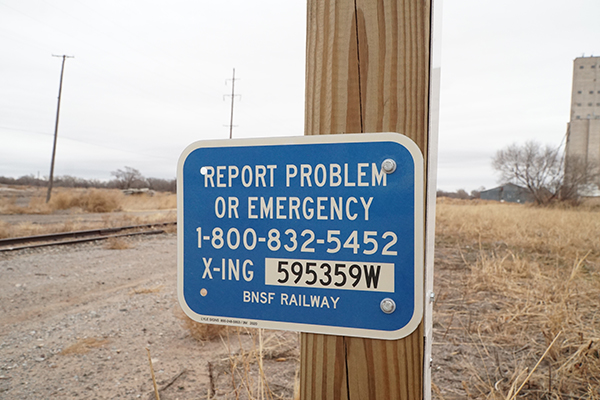By JORDAN GREEN, Editor-in-Chief

What should you do if you get stuck on the railroad tracks?
Don’t call 9-1-1. There’s a better answer to the problem.
Cars and trucks get stuck on railroad tracks somewhat often, even in 2022. Stranded drivers sometimes call 9-1-1, hoping that a dispatcher can contact railroad officials in time to stop fast-moving freight trains.
But unless you’re experiencing a medical emergency, 9-1-1 is not the first number you should call in such a situation.
On railroad crossing gate posts are small blue signs with white letters. Called Emergency Notification System signage, these placards list a phone number drivers can call in the event of an emergency at that crossing. They also list information about the location of the crossing.
Those phone numbers belong to railroads, and when drivers call, a railroad official will answer. Then, drivers say what the situation is and read off the crossing number on the sign. Railroad dispatchers can then contact train crews and order them to stop their trains. (If there’s enough time before the train reaches the crossing, of course.)
I was shocked to find out a few weeks ago that most people don’t know these signs exist. I’m a railroad man, and I make a habit of looking for these signs at every grade crossing. I was talking with some friends about cars getting hit by trains, and none of them knew about the blue signs. In fact, none of them really knew what to do if they got stuck.
Luckily, the answer is simple. We’ve just got to know what to look for.
So, why not call 9-1-1? Because the signs offer something calling 9-1-1 doesn’t: nearly instant contact with someone who can actually make trains stop.
First of all, most people don’t know which railroad tracks they’re stuck on. Are they stuck on tracks belonging to BNSF, Union Pacific, CSX, Norfolk Southern or some small railroad they don’t even know about? Second, most drivers don’t know their location well enough to describe it to a dispatcher in a useful way. Telling a dispatcher you’re stuck on railroad tracks, but you don’t know what road you’re on or which railroad to call, isn’t going to be fruitful.
Third, some dispatchers don’t know how to contact railroad call centers or properly relay the information they get from drivers – if that information is even accurate. And lastly, dialing 9-1-1 takes more time. Drivers have to tell dispatchers the situation, and then dispatchers have to contact railroads and repeat the same information. All of this takes up precious time. (To be clear, I don’t mean to say anything bad about 9-1-1 dispatchers. They’re incredible people. Some of these problems could be fixed with better safety programs sponsored by railroads.)
The blue cards provide the crossing number, which is tied to a precise location that railroad employees can easily find. And the signs have the perfect number for drivers to call.
Being safe around railroad crossings is as important today as ever. Distracted driving is high because of drivers using cellphones, so it’s important that we pay attention to our surroundings. And in the event you ever get stuck on railroad tracks – I hope you never do – remember to look for the little blue sign, call the number and stay away from the tracks.
The Operation Livesaver railroad safety program puts it this way: “Find the blue and white to save your life.”
You can save your life simply by getting out of your car and getting off the tracks. But if you want your car to get saved with you, the blue sign is the key.

